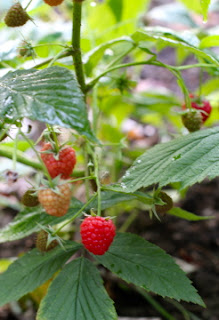After doing a quick bit of googling, Saffron buns seemed tempting. I liked the idea of the warmth of the spice combined with a rich dough. I found lots of recipes for the traditional Cornish cake and also some for a Swedish bun called Lussekatt (Lucia's Cat) which are traditionally baked on the 13th December to celebrate the Saint Lucia. This feast day falls near the shortest day and is celebrated by Catholic, Anglican, Lutheran and Orthodox Christians.
The Swedish buns are simply an enriched saffron dough decorated with a few raisins before baking, but I desired more fruit and some citrus flavour too. My buns with candied peel are the resulting love child of a Cornish and Scandinavian dalliance. Delicious!
Saffron Buns
250ml milk1 tsp saffron
500g strong white flour
1 sachet dried yeast (7g)
50g butter, cubed
1/2 tsp salt
50g caster sugar
1 egg
50g raisins
50g candied peel, if desired
eggwash
Brick dust, optional.
Warm the milk and add the saffron. Stir and leave to infuse for 20 minutes.
Rub the butter into the flour until it looks like breadcrumbs, then stir in the sugar, salt and yeast. Don't let the salt sit directly on the yeast or it will kill it; stir each ingredient in separately. Mix in the fruit then add the milk and egg to form a dough.
Knead the dough for about 10 mins and then leave to rise for one hour or so, by which time it should have doubled in size.
Divide the dough into 10 equal pieces. As ridiculous as it seems, I do bother weighing the whole mass and then each piece at this stage to get even sized buns. Roll each ball between your palms, stretching it evenly until it is 20-25cm long. Join the two ends together and twist the dough to make a figure of eight. Wriggle your shape so the join is in the centre and on the underside of the shape.
Place the buns a few centimeters apart on a tray covered in baking paper and stud each loop with an extra raisin. Leave to rise for 45 mins. Eggwash, then bake at 200c for 12-15 mins. The buns are ready when golden brown. They should make a hollow sound when you tap the underneath.
The saffron came through very well and the dough was light and springy. We all felt these were quite plain and would have been more festive with a little icing. I saw a frosting recipe recently which was a mix of soft cheese, icing sugar and milk. I think that would be lovely here, perhaps with a little orange juice or zest.























